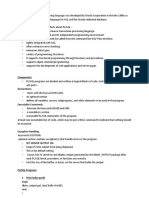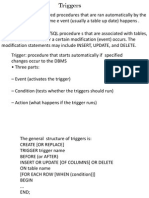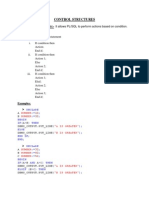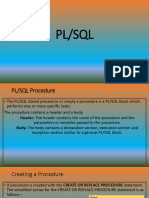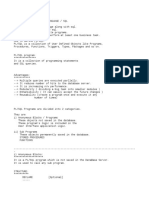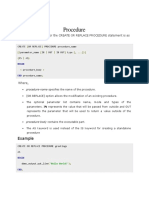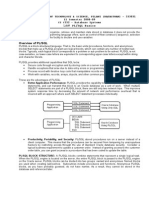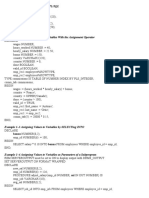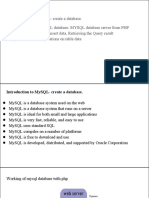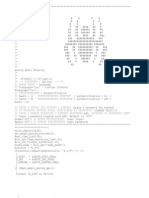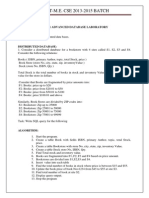0% found this document useful (0 votes)
74 views12 pagesProcedureand Functions
The document discusses PL/SQL procedures, functions, cursors, exceptions, and triggers. It provides examples of creating and using procedures and functions. It defines implicit and explicit cursors and provides examples of using both. It also demonstrates exception handling in PL/SQL to catch errors. Finally, it shows the syntax for creating triggers and provides a simple example of a before insert trigger used to calculate totals and averages for a student table.
Uploaded by
jjCopyright
© © All Rights Reserved
We take content rights seriously. If you suspect this is your content, claim it here.
Available Formats
Download as PDF, TXT or read online on Scribd
0% found this document useful (0 votes)
74 views12 pagesProcedureand Functions
The document discusses PL/SQL procedures, functions, cursors, exceptions, and triggers. It provides examples of creating and using procedures and functions. It defines implicit and explicit cursors and provides examples of using both. It also demonstrates exception handling in PL/SQL to catch errors. Finally, it shows the syntax for creating triggers and provides a simple example of a before insert trigger used to calculate totals and averages for a student table.
Uploaded by
jjCopyright
© © All Rights Reserved
We take content rights seriously. If you suspect this is your content, claim it here.
Available Formats
Download as PDF, TXT or read online on Scribd
/ 12
